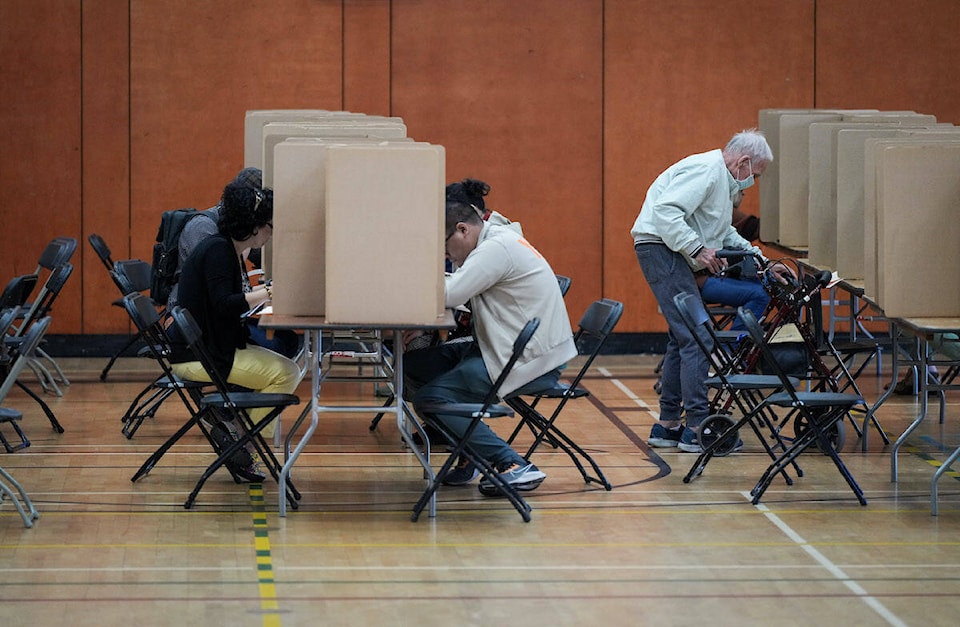If “all politics is local”, as the saying goes, then why is the turnout for local elections in BC always so low? Former Speaker of the US House of representatives Tip O’Neil, who is credited with popularizing the phrase, also said “you can teach an old dog new tricks if the old dog wants to learn.” If that is true, we may be able to boost participation in future local elections if we can better understand the reasons for low local turnout. But don’t count on that in the local election cycle just concluded.
British Columbians headed to the polls this past weekend to vote for local councils. Typical turnout for provincial elections in BC is around 55 percent and federal turnout is even higher, averaging about 75 per cent. Scholars and political analysts have explored why local election turnout is low and how it might be increased, but the participation rate remains stubbornly under the 40 per cent range.
One reason cited for the low turnout is the peculiar nature of local elections, including the complicated layout of ballots and the lack of competition for key jobs like Mayor. According to Civic Info BC, which analyzes data about local elections, there are dozens of contests for Mayor that saw no challenger in 2022 (37), almost identical to the level of acclaimed Mayoral candidates in 2018 (36). But the City of Vancouver tops the list of peculiarities contributing to low electoral turnout.
In Vancouver, which does not have a ward system and candidates for council are elected across the city. This led to a staggering array of choices, with over 130 candidate names to wade through. Voters could choose up to ten candidates from a randomized list of 58 for City Councillor. They also had to pick one person for Mayor from a list of 15, seven Park Board Commissioners from a list of 31 and nine Trustees from a list of 30 for School Board. No wonder the turnout rarely exceeds 40 per cent.
Despite the strange electoral slate in Vancouver, turnout levels there are at the higher end of the spectrum in BC (39 per cent in 2018), ranking third among large BC municipalities, just behind Nanaimo (40 per cent) and Victoria, at 45 per cent. But with the City of Vancouver near the top of the list in terms of turnout in 2018, ballot complexity is clearly not a driving factor in low participation.
Typically, in BC only one in three voters decide the outcome of local elections. The power of incumbency tends to keep turnout rates low. When Mayoral candidates run for re-election, we often see historically low turnout. Civic Info BC points out that four out five incumbents running in 2018 (81 per cent) were re-elected.
With 37 Mayors running unopposed in 2022, don’t expect a boosted in voter turnout from 2018 levels. There are instances, however, when the electorate wants to throw someone out of office, that turnout rates increase. Take Oak Bay for example, which is the only municipality in BC where over half the electorate showed up to vote in 2018 (54 per cent). Oak Bay topped the list in 2018 due in part to Mayoral challenger Kevin Murdoch’s resounding defeat of unpopular incumbent Nils Jensen.
In 2022, re-matches for the Mayoral seat also took place in two communities that saw relatively high turnouts in 2018: Vancouver (incumbent Kennedy Stewart versus his 2018 opponent Ken Sim) and West Vancouver, where Mary-Ann Booth narrowly defeated incumbent Mark Sager in 2018. They compete again in 2022.
At the low extreme of voter turnout in 2018, and likely to be there again in 2022, are communities where fewer than one in four voters showed up to vote: Prince George (24 per cent), Golden (23), Fort St. John (19) and Langford (at only 18 per cent in 2022). Given the fact that Langford’s perennial incumbent Mayor, Stewart Young (with over three decades in office), is running again in 2022, Langford may remain the lowest turnout race in BC. Unless people turn up in droves to vote for change, like they did in Oak Bay in 2018.
Is the historical low turnout rate in BC due to incumbency, ballot complexity, or just plain apathy? Whatever the reason, local elections in BC are not a shining example of democracy in action. In 2022 that doesn’t look likely to change.
Bruce Cameron has been a pollster and strategist for over 35 years, working initially for Gallup Polls, Decima Research and the Angus Reid Group before founding his own consultancy, Return On Insight.



